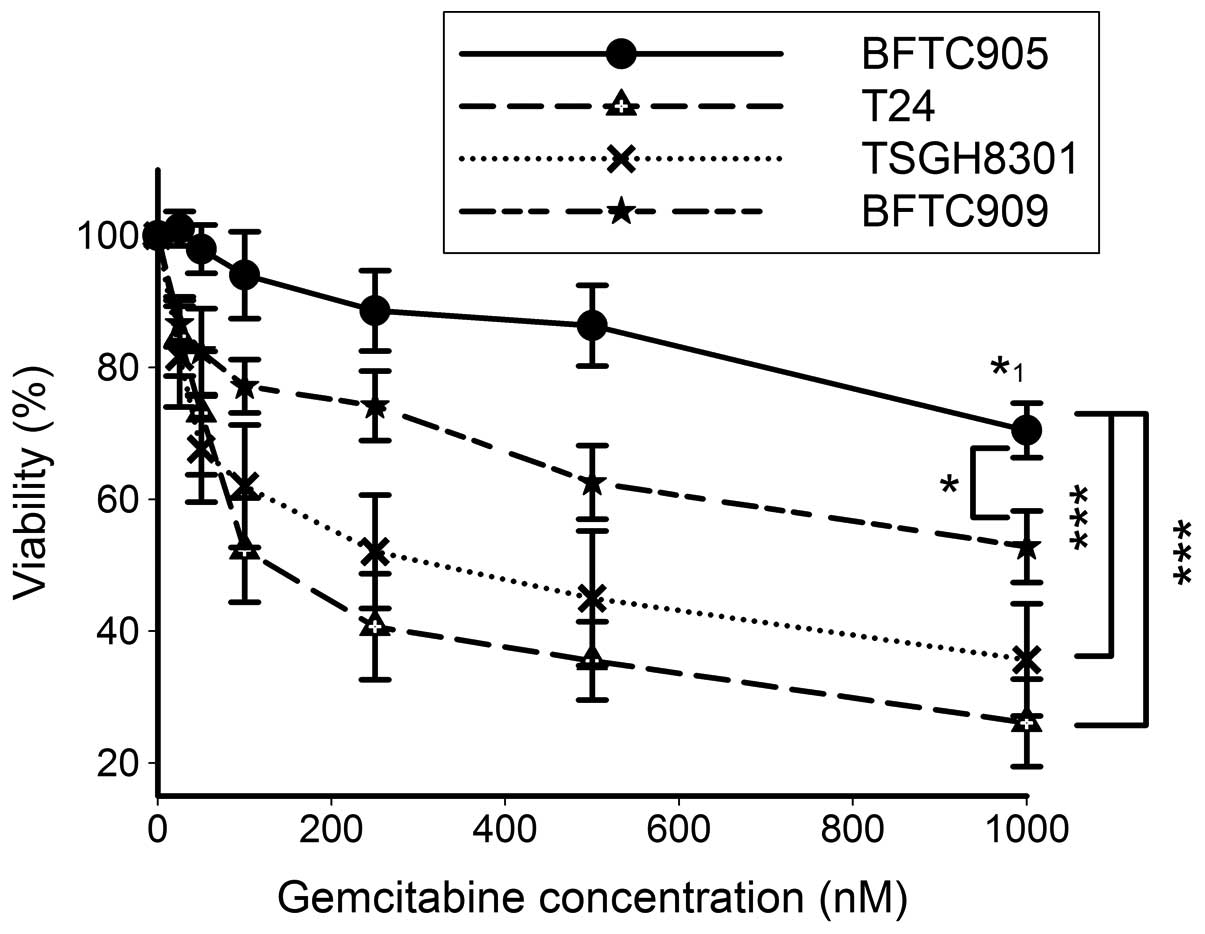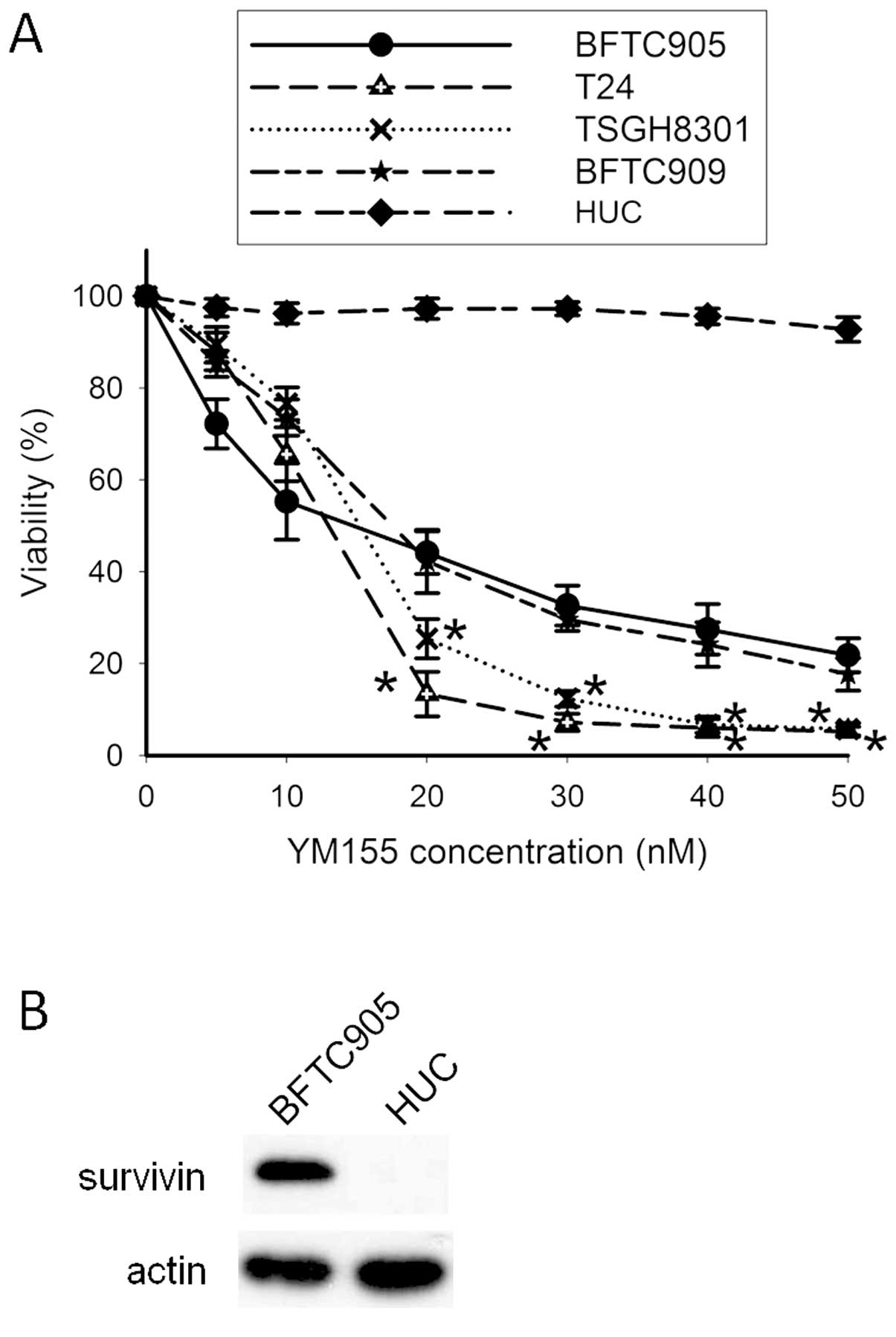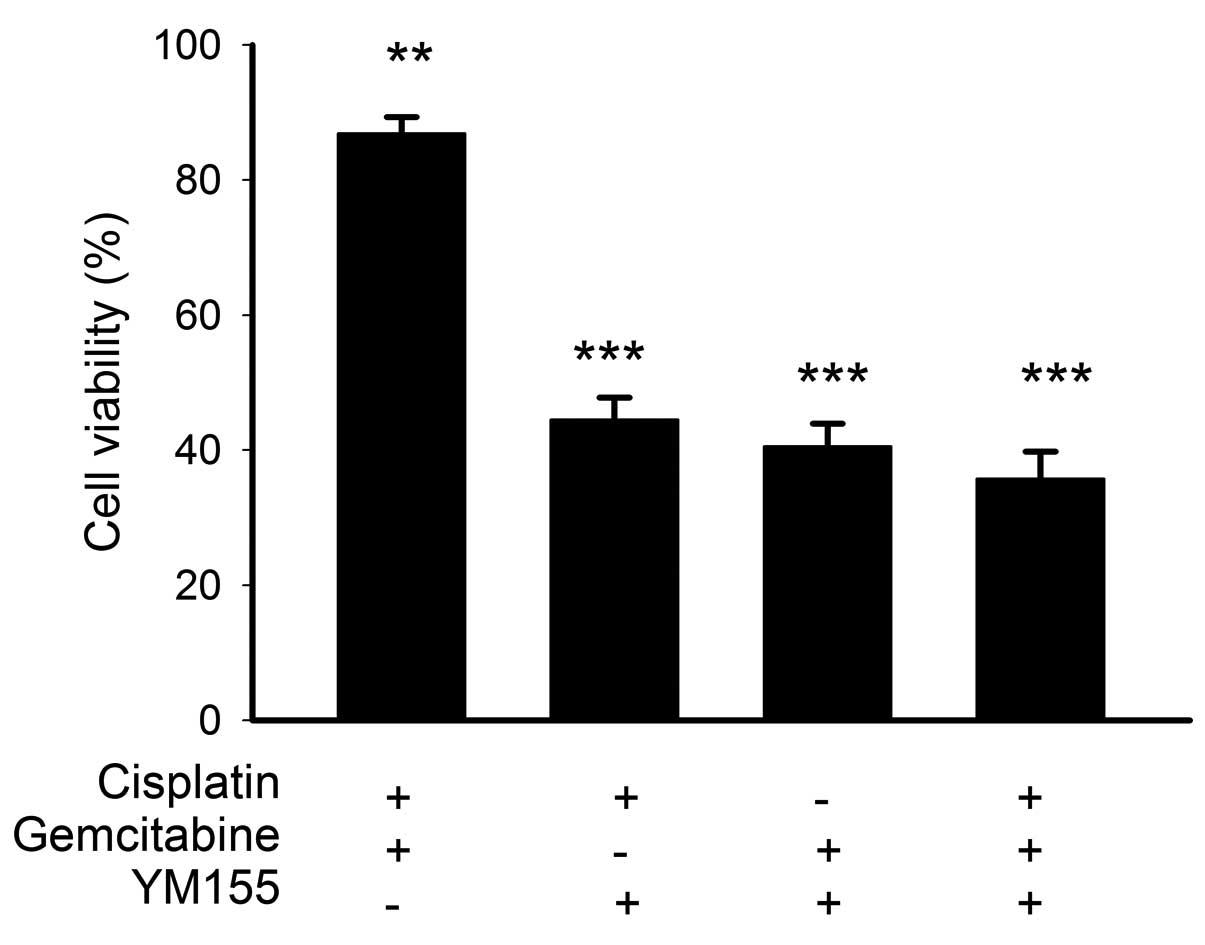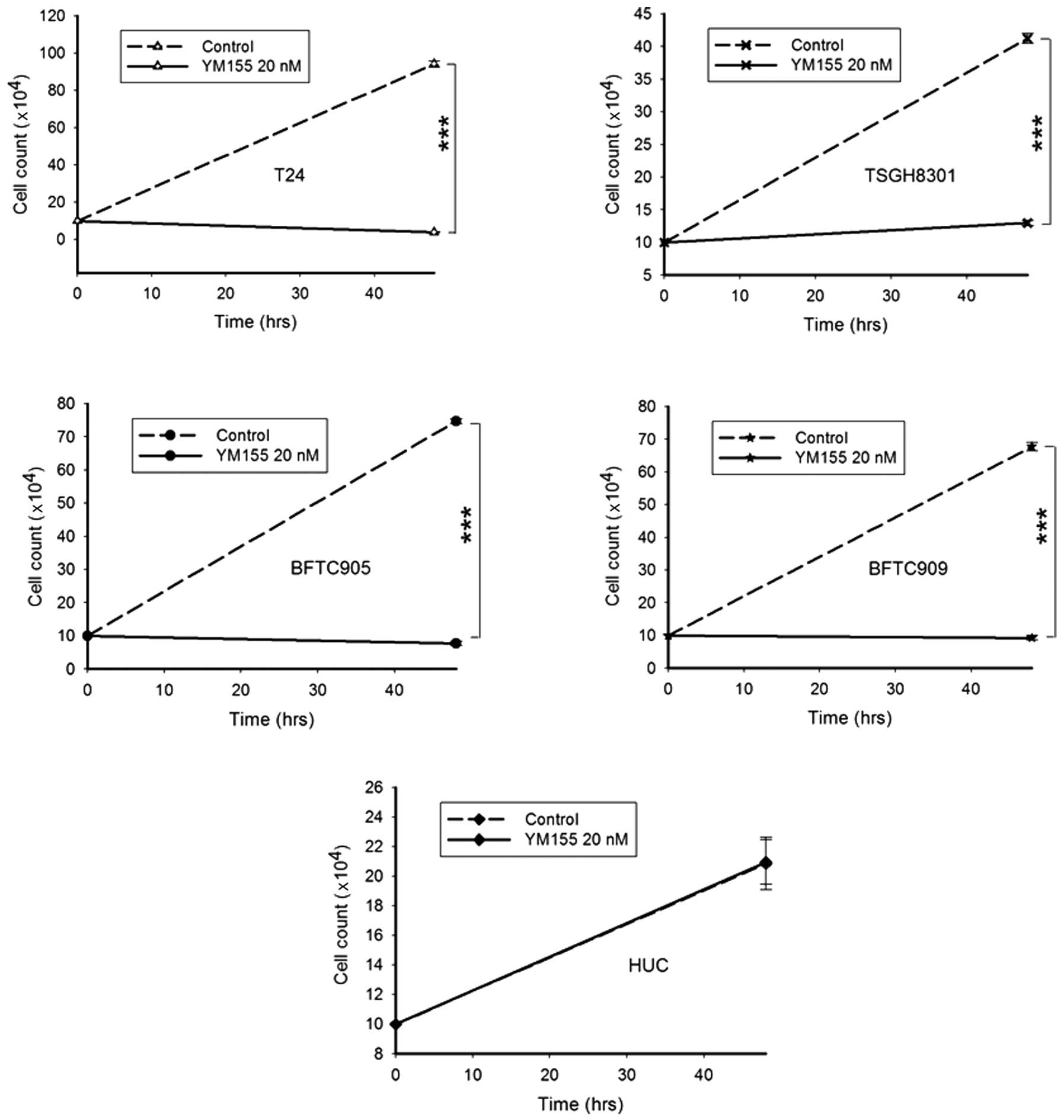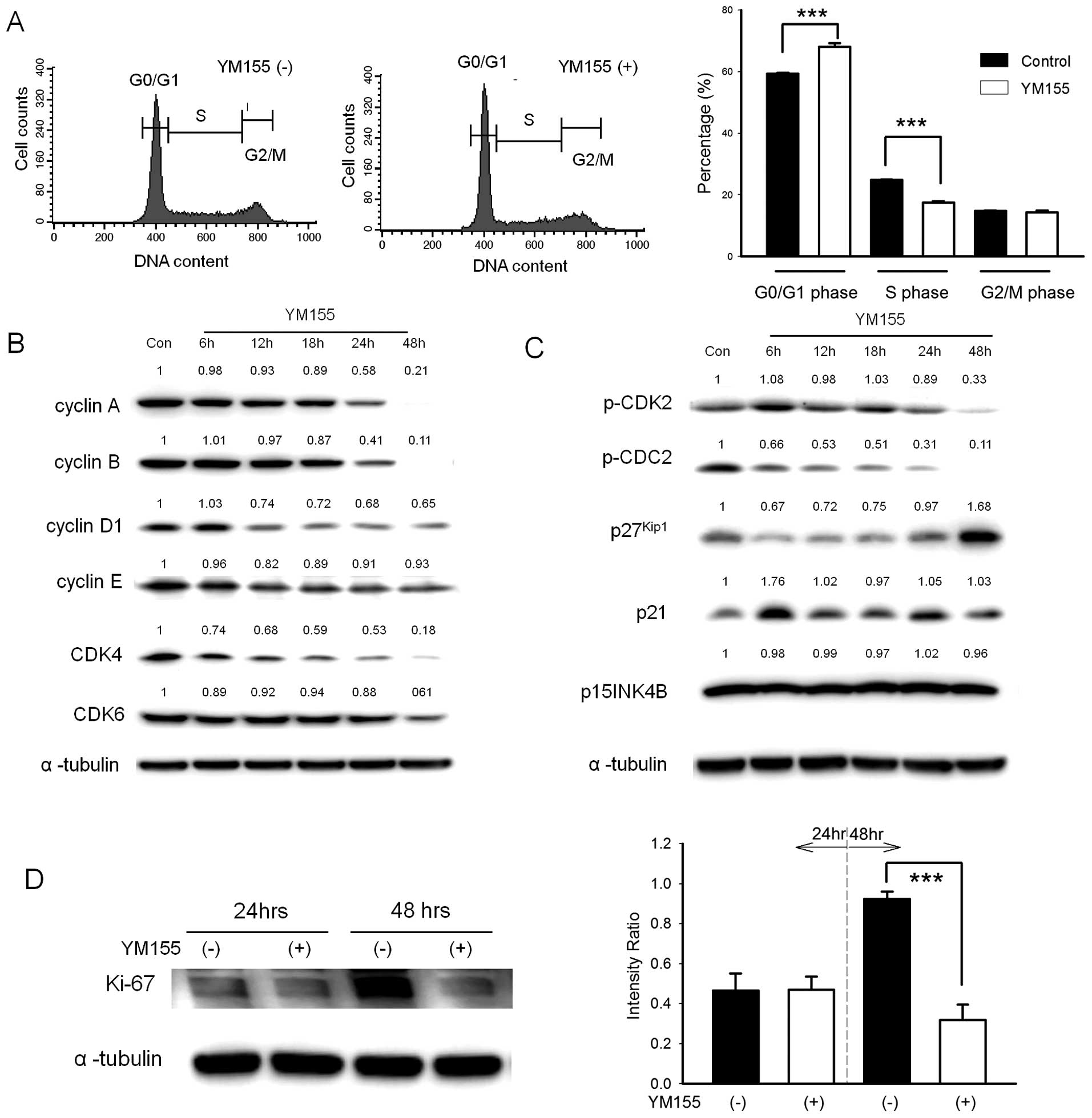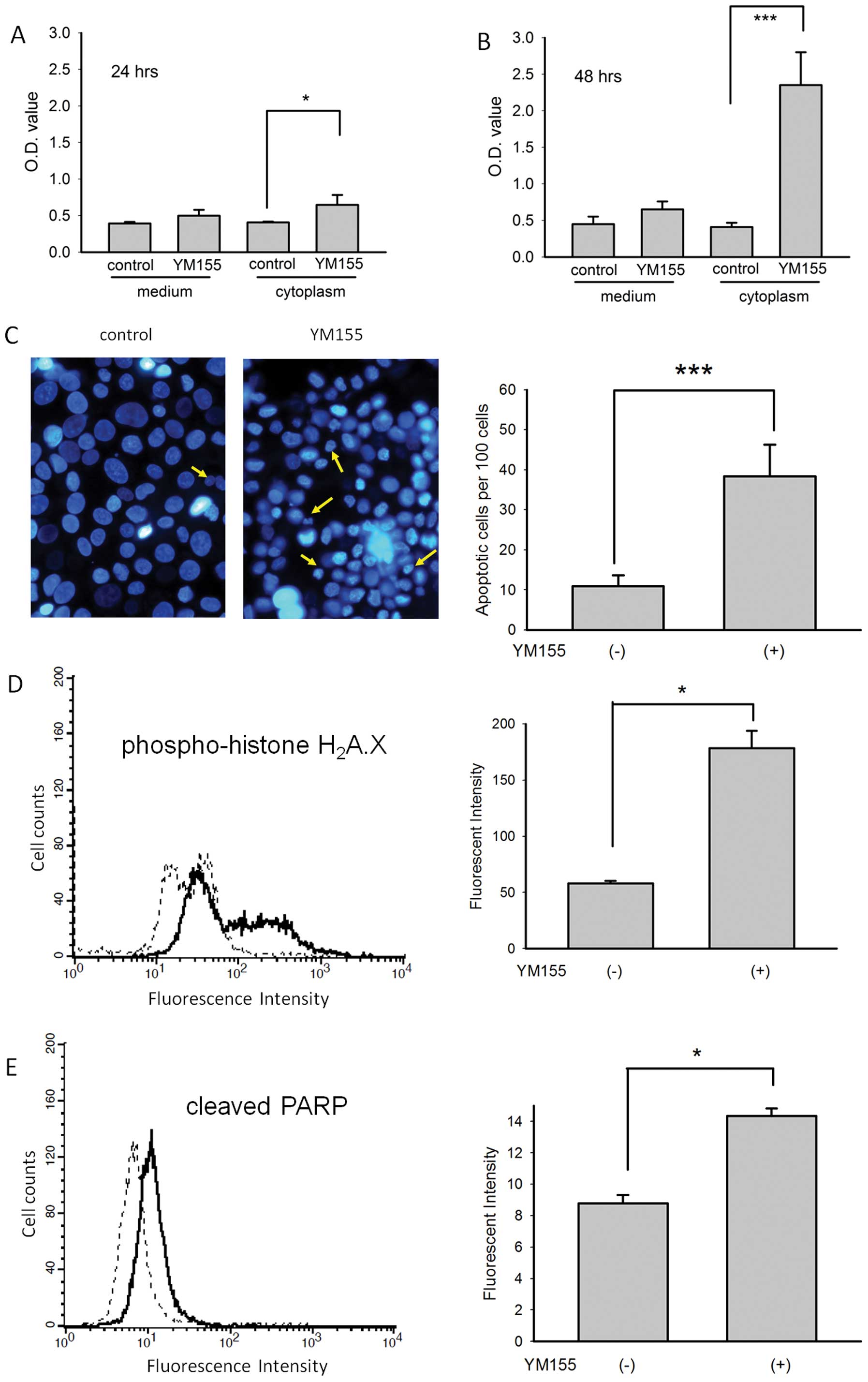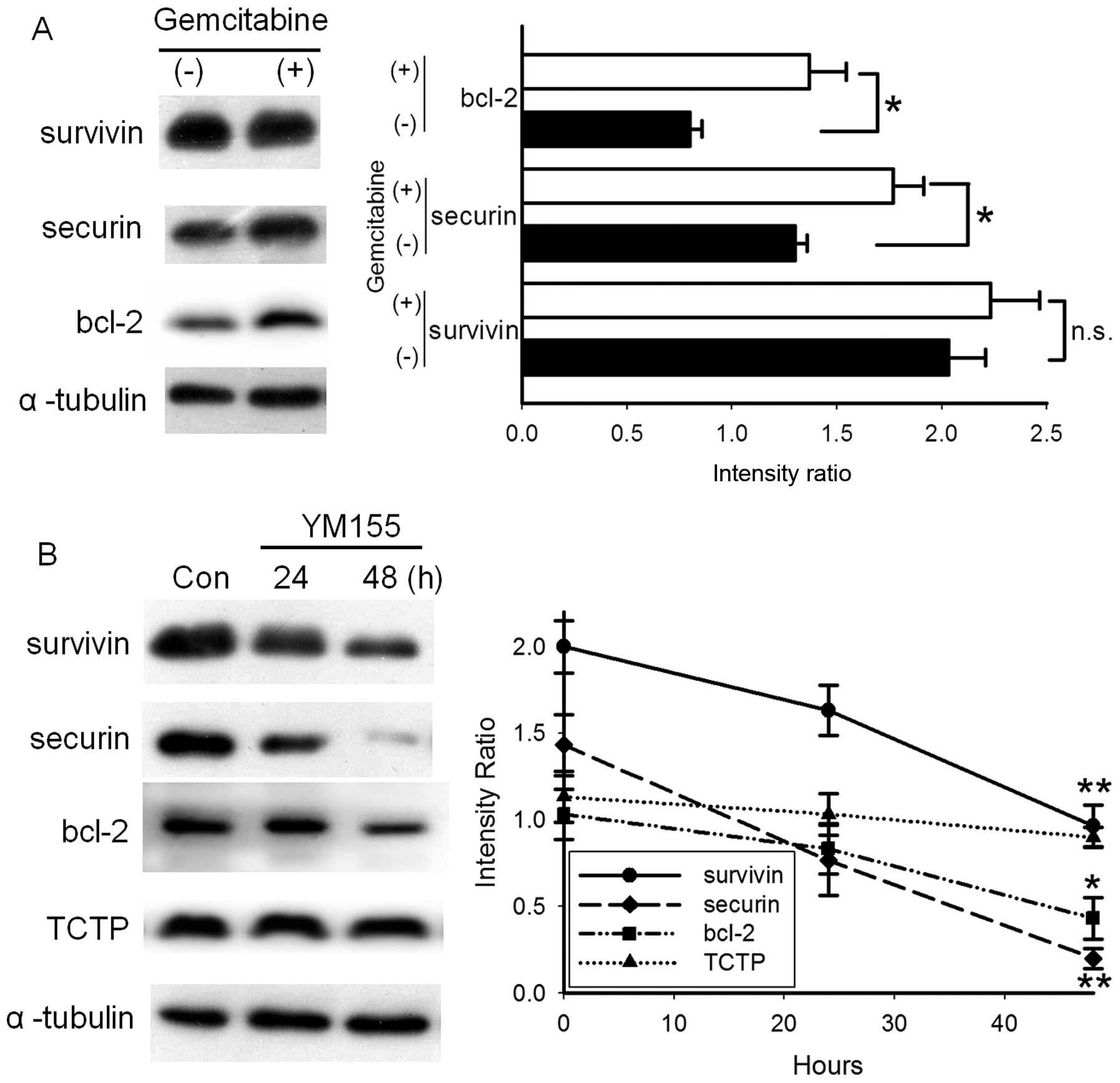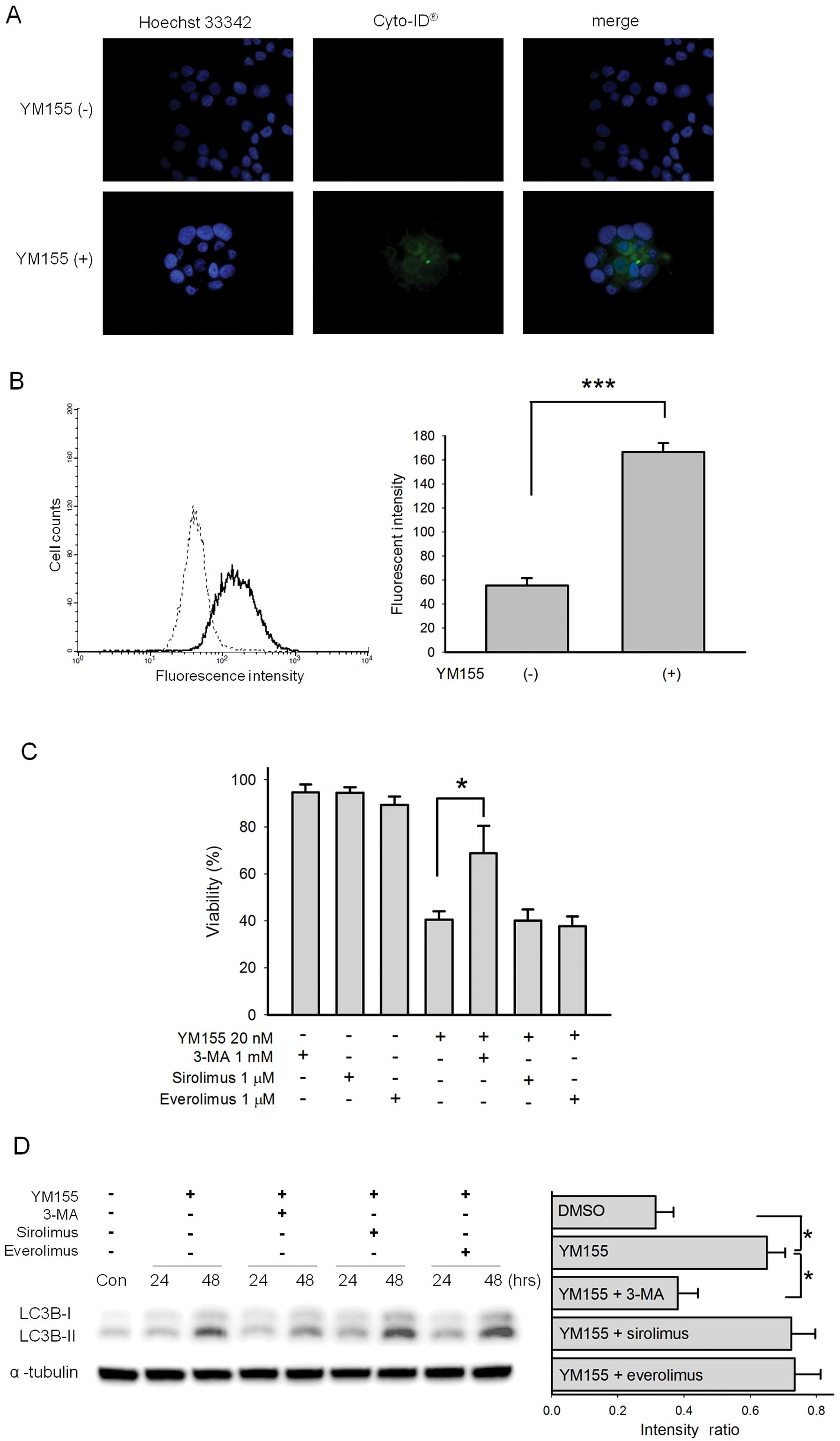|
1
|
Tavora F and Epstein JI: Bladder cancer,
pathological classification and staging. BJU Int. 102:1216–1220.
2008. View Article : Google Scholar : PubMed/NCBI
|
|
2
|
Murta-Nascimento C, Schmitz-Dräger,
Zeegers MP, et al: Epidemiology of urinary bladder cancer: from
tumor development to patient's death. World J Urol. 25:285–295.
2007. View Article : Google Scholar
|
|
3
|
George L, Bladou F, Bardou VJ, et al:
Clinical outcome in patients with locally advanced bladder
carcinoma treated with conservative multimodality therapy. Urology.
64:488–493. 2004. View Article : Google Scholar : PubMed/NCBI
|
|
4
|
von der Maase H, Hansen SW, Roberts JT, et
al: Gemcitabine and cisplatin versus methotrexate, vinblastine,
doxorubicin, and cisplatin in advanced or metastatic bladder
cancer: results of a large, randomized, multinational, multicenter,
phase III study. J Clin Oncol. 18:3068–3077. 2000.
|
|
5
|
Sternberg CN: Gemcitabine in bladder
cancer. Semin Oncol. 27:31–39. 2000.
|
|
6
|
Chaudhary UB, Verma N, Keane T and Gudena
V: A phase II study of gemcitabine and irinotecan in patients with
locally advanced or metastatic bladder cancer. Am J Clin Oncol. Dec
13–2012.(Epub ahead of print).
|
|
7
|
Culine S, Fléchon A, Guillot A, et al:
Gemcitabine or gemcitabine plus oxaliplatin in the first-line
treatment of patients with advanced transitional cell carcinoma of
the urothelium unfit for cisplatin-based chemotherapy: a randomized
phase 2 study of the French Genitourinary Tumor Group (GETUG V01).
Eur Urol. 60:1251–1257. 2011.
|
|
8
|
Muramaki M, So A, Hayashi N, et al:
Chemosensitization of gemcitabine-resistant human bladder cancer
cell line both in vitro and in vivo using antisense oligonucleotide
targeting the anti-apoptotic gene, clusterin. BJU Int. 103:384–390.
2009. View Article : Google Scholar
|
|
9
|
Margulis V, Lotan Y and Shariat SF:
Survivin: a promising biomarker for detection and prognosis of
bladder cancer. World J Urol. 26:59–65. 2008. View Article : Google Scholar : PubMed/NCBI
|
|
10
|
Nakahara T, Takeuchi M, Kinoyama I, et al:
YM155, a novel small-molecule survivin suppressant, induces
regression of established human hormone-refractory prostate tumor
xenografts. Cancer Res. 67:8014–8021. 2007. View Article : Google Scholar
|
|
11
|
Nakamura N, Yamauchi T, Hiramoto M, et al:
Interleukin enhancer-binding factor 3/NF110 is a target of YM155, a
suppressant of survivin. Mol Cell Proteomics. 11:M111.013243. 2012.
View Article : Google Scholar : PubMed/NCBI
|
|
12
|
Wang Q, Chen Z, Diao X and Huang S:
Induction of autophagy-dependent apoptosis by the survivin
suppressant YM155 in prostate cancer cells. Cancer Lett. 302:29–36.
2011. View Article : Google Scholar : PubMed/NCBI
|
|
13
|
Nakahara T, Yamanaka K, Hatakeyama S, et
al: YM155, a novel survivin suppressant, enhances taxane-induced
apoptosis and tumor regression in a human Calu 6 lung cancer
xenograft model. Anticancer Drugs. 22:454–462. 2011. View Article : Google Scholar
|
|
14
|
Iwasa T, Okamoto I, Suzuki M, et al:
Radiosensitizing effect of YM155, a novel small-molecule survivin
suppressant, in non-small cell lung cancer cell lines. Clin Cancer
Res. 14:6496–6504. 2008. View Article : Google Scholar : PubMed/NCBI
|
|
15
|
Tzeng CC, Liu HS, Li C, et al:
Characterization of two urothelium cancer cell lines derived from a
blackfoot disease endemic area in Taiwan. Anticancer Res.
16:1797–1804. 1996.PubMed/NCBI
|
|
16
|
Huang YT, Lai PC, Wu CC, et al: BDNF
mediated TrkB activation is a survival signal for transitional cell
carcinoma cells. Int J Oncol. 36:1469–1476. 2010.PubMed/NCBI
|
|
17
|
Lai PC, Yang YC, Cheng CC, Chiu TH and
Huang YT: Brain-derived neurotrophic factor plus vascular
endothelial growth factor additively promotes early growth of the
transitional cell carcinoma cell line BFTC905 in vitro and in vivo.
Tzu Chi Med J. 25:155–160. 2013. View Article : Google Scholar
|
|
18
|
Chao JI, Su WC and Liu HF: Baicalein
induces cancer cell death and proliferation retardation by the
inhibition of CDC2 kinase and survivin associated with opposite
role of p38 mitogen-activated protein kinase and AKT. Mol Cancer
Ther. 6:3039–3048. 2007. View Article : Google Scholar
|
|
19
|
Lai PC, Chen SH, Yang SH, Cheng CC, Chiu
TH and Huang YT: Novel survivin inhibitor YM155 elicits
cytotoxicity in glioblastoma cell lines with normal or deficiency
DNA-dependent protein kinase activity. Pediatr Neonatol.
53:199–204. 2012. View Article : Google Scholar : PubMed/NCBI
|
|
20
|
Liukkonen TJ, Lipponen PK, Helle M and
Jauhiainen KE: Immunoreactivity of bcl-2, p53 and EGFr is
associated with tumor stage, grade and cell proliferation in
superficial bladder cancer. Finnbladder III Group. Urol Res.
25:1–7. 1997. View Article : Google Scholar : PubMed/NCBI
|
|
21
|
Gazzaniga P, Gradilone A, Silvestri I, et
al: Variable levels of bcl-2, bcl-X and bax
mRNA in bladder cancer progression. Oncol Rep. 5:901–904. 1998.
|
|
22
|
Lai PC, Fang TC, Chiu TH and Huang YT:
Overexpression of securin in human transitional cell carcinoma
specimens. Tzu Chi Med J. 22:171–176. 2010. View Article : Google Scholar
|
|
23
|
Bommer UA and Thiele BJ: The
translationally controlled tumour protein (TCTP). Int J Biochem
Cell Biol. 36:379–385. 2004. View Article : Google Scholar
|
|
24
|
Koziol MJ and Gurdon JB: TCTP in
development and cancer. Biochem Res Int. 2012:1052032012.
View Article : Google Scholar : PubMed/NCBI
|
|
25
|
Lewis KD, Samlowski W, Ward J, et al: A
multi-center phase II evaluation of the small molecule survivin
suppressor YM155 in patients with unresectable stage III or IV
melanoma. Invest New Drugs. 29:161–166. 2011. View Article : Google Scholar : PubMed/NCBI
|
|
26
|
Yoon CY, Lee JS, Kim BS, et al: Sunitinib
malate synergistically potentiates anti-tumor effect of gemcitabine
in human bladder cancer cells. Korean J Urol. 52:55–63. 2011.
View Article : Google Scholar : PubMed/NCBI
|
|
27
|
Moibi JA, Mak AL, Sun B and Moore RB:
Urothelial cancer cell response to combination therapy of
gemcitabine and TRAIL. Int J Oncol. 39:61–71. 2011.PubMed/NCBI
|
|
28
|
Yoon DH, Shin JS, Jin DH, et al: The
survivin suppressant YM155 potentiates chemosensitivity to
gemcitabine in the human pancreatic cancer cell line MiaPaCa-2.
Anticancer Res. 32:1681–1688. 2012.PubMed/NCBI
|
|
29
|
Zou H, McGarry TJ, Bernal T and Kirschner
MW: Identification of a vertebrate sister-chromatid separation
inhibitor involved in transformation and tumorigenesis. Science.
285:418–422. 1999. View Article : Google Scholar : PubMed/NCBI
|
|
30
|
Yu SY, Liu HF, Wang SP, Chang CC, Tsai CM
and Chao JI: Evidence of securin-mediated resistance to
gefitinib-induced apoptosis in human cancer cells. Chem Biol
Interact. 203:412–422. 2013. View Article : Google Scholar : PubMed/NCBI
|
|
31
|
Yu HM and Wang TC: Mechanism of cisplatin
resistance in human urothelial carcinoma cells. Food Chem Toxicol.
50:1226–1237. 2012. View Article : Google Scholar : PubMed/NCBI
|
|
32
|
Lai PC, Chiu TH and Huang YT:
Overexpression of BDNF and TrkB in human bladder cancer specimens.
Oncol Rep. 24:1265–1270. 2010.PubMed/NCBI
|
|
33
|
Huang YT, Lai PC, Wu CC, Cheng CC and Chiu
TH: TrkB antibody elicits cytotoxicity and suppresses
migration/invasion of transitional cell carcinoma cells. Int J
Oncol. 37:943–949. 2010.PubMed/NCBI
|
|
34
|
Kumar B, Yadav A, Lang JC, et al: YM155
reverses cisplatin resistance in head and neck cancer by decreasing
cytoplasmic survivin levels. Mol Cancer Ther. 11:1988–1998. 2012.
View Article : Google Scholar : PubMed/NCBI
|
|
35
|
Iwasa T, Okamoto I, Takezawa K, et al:
Marked anti-tumour activity of the combination of YM155, a novel
survivin suppressant, and platinum-based drugs. Br J Cancer.
103:36–42. 2010. View Article : Google Scholar : PubMed/NCBI
|
|
36
|
Kita A, Mitsuoka K, Kaneko N, et al:
Sepantronium bromide (YM155) enhances response of human B-cell
non-Hodgkin lymphoma to rituximab. J Pharmacol Exp Ther.
343:178–183. 2012. View Article : Google Scholar : PubMed/NCBI
|
|
37
|
Kaneko N, Kita A, Yamanaka K and Mori M:
Combination of YM155, a survivin suppressant with a STAT3
inhibitor: a new strategy to treat diffuse large B-cell lymphoma.
Leuk Res. 37:1156–1161. 2013. View Article : Google Scholar : PubMed/NCBI
|
|
38
|
Yamanaka K, Nakahara T, Yamauchi T, et al:
Antitumor activity of YM155, a selective small-molecule survivin
suppressant, alone and in combination with docetaxel in human
malignant melanoma models. Clin Cancer Res. 17:5423–5431. 2011.
View Article : Google Scholar
|
|
39
|
Chen J, Pise-Masison CA, Shih JH, et al:
Markedly additive antitumor activity with the combination of a
selective survivin suppressant YM155 and alemtuzumab in adult
T-cell leukemia. Blood. 121:2029–2037. 2013. View Article : Google Scholar : PubMed/NCBI
|
|
40
|
Li F, Ambrosini G, Chu EY, et al: Control
of apoptosis and mitotic spindle checkpoint by survivin. Nature.
396:580–584. 1998. View
Article : Google Scholar : PubMed/NCBI
|
|
41
|
Ning S, Fuessel S, Kotzsch M, et al:
siRNA-mediated down-regulation of survivin inhibits bladder cancer
cell growth. Int J Oncol. 25:1065–1071. 2004.PubMed/NCBI
|
|
42
|
Ghadimi MP, Young ED, Belousov R, et al:
Survivin is a viable target for the treatment of malignant
peripheral nerve sheath tumors. Clin Cancer Res. 18:2545–2557.
2012. View Article : Google Scholar : PubMed/NCBI
|
|
43
|
Cheng Q, Ling X, Haller A, et al:
Suppression of survivin promoter activity by YM155 involves
disruption of Sp1-DNA interaction in the survivin core promoter.
Int J Biochem Mol Biol. 3:179–197. 2012.PubMed/NCBI
|
|
44
|
Sherr CJ: Cancer cell cycles. Science.
274:1672–1677. 1996. View Article : Google Scholar : PubMed/NCBI
|
|
45
|
Hunter T and Pines J: Cyclins and cancer.
II: cyclin D and CDK inhibitors come of age. Cell. 79:573–582.
1994. View Article : Google Scholar : PubMed/NCBI
|
|
46
|
Arora R, Shuda M, Guastafierro A, et al:
Survivin is a therapeutic target in Merkel cell carcinoma. Sci
Transl Med. 4:133ra562012. View Article : Google Scholar : PubMed/NCBI
|
|
47
|
Scholzen T and Gerdes J: The Ki-67
protein: from the known and the unknown. J Cell Physiol.
182:311–322. 2000. View Article : Google Scholar : PubMed/NCBI
|
|
48
|
Gerdes J, Li L, Schlueter C, et al:
Immunobiochemical and molecular biologic characterization of the
cell proliferation-associated nuclear antigen that is defined by
monoclonal antibody Ki-67. Am J Pathol. 138:867–873. 1991.
|
|
49
|
Gou X, Yang HA, He WY, Xioa MC and Wang M:
Gene silence-induced downregulation of survivin inhibits bladder
cancer cells. Oncol Res. 19:535–541. 2011. View Article : Google Scholar : PubMed/NCBI
|
|
50
|
Ku JH, Seo SY, Kwak C and Kim HH:
Cytotoxicity and apoptosis by survivin small interfering RNA in
bladder cancer cells. BJU Int. 106:1812–1816. 2010. View Article : Google Scholar : PubMed/NCBI
|
|
51
|
Tao YF, Lu J, Du XJ, et al: Survivin
selective inhibitor YM155 induce apoptosis in SK-NEP-1 Wilms tumor
cells. BMC Cancer. 12:6192012. View Article : Google Scholar : PubMed/NCBI
|
|
52
|
Oliver FJ, de la Rubia G, Rolli V,
Ruiz-Ruiz MC, de Murcia G and Murcia JM: Importance of
poly(ADP-ribose) polymerase and its cleavage in apoptosis. Lesson
from an uncleavable mutant. J Biol Chem. 273:33533–33539. 1998.
View Article : Google Scholar : PubMed/NCBI
|
|
53
|
Yamanaka K, Nakata M, Kaneko N, et al:
YM155, a selective survivin suppressant, inhibits tumor spread and
prolongs survival in a spontaneous metastatic model of human triple
negative breast cancer. Int J Oncol. 39:569–575. 2011.
|
|
54
|
Kuo LJ and Yang LX: γ-H2AX - a novel
biomarker for DNA double-strand breaks. In Vivo. 22:305–309.
2008.
|
|
55
|
Chowdhury D, Keogh MC, Ishii H, Peterson
CL, Buratowski S and Lieberman J: γ-H2AX dephosphorylation by
protein phosphatase 2A facilitates DNA double-strand break repair.
Mol Cell. 20:801–809. 2005.
|
|
56
|
Zhang Y, Chen ZD, Du CJ, Xu G and Luo W:
siRNA targeting survivin inhibits growth and induces apoptosis in
human renal clear cell carcinoma 786-O cells. Pathol Res Pract.
205:823–827. 2009. View Article : Google Scholar : PubMed/NCBI
|
|
57
|
Salehi F, Kovacs K, Scheithauer BW, Lloyd
RV and Cusimano M: Pituitary tumor-transforming gene in endocrine
and other neoplasms: a review and update. Endocr Relat Cancer.
15:721–743. 2008. View Article : Google Scholar : PubMed/NCBI
|
|
58
|
Chao JI and Liu HF: The blockage of
survivin and securin expression increases the cytochalasin
B-induced cell death and growth inhibition in human cancer cells.
Mol Pharmacol. 69:154–164. 2006.
|
|
59
|
Sheverdin V, Bae SY, Shin DH and Lee K:
Expression and localization of translationally controlled tumor
protein in rat urinary organs. Microsc Res Tech. 75:1576–1581.
2012. View Article : Google Scholar : PubMed/NCBI
|
|
60
|
Roca H, Varsos ZS, Mizutani K and Pienta
KJ: CCL2, survivin and autophagy: new links with implications in
human cancer. Autophagy. 4:969–971. 2008. View Article : Google Scholar : PubMed/NCBI
|
|
61
|
Kreuzaler P and Watson CJ: Killing a
cancer: what are the alternatives? Nat Rev Cancer. 12:411–424.
2012. View Article : Google Scholar : PubMed/NCBI
|















